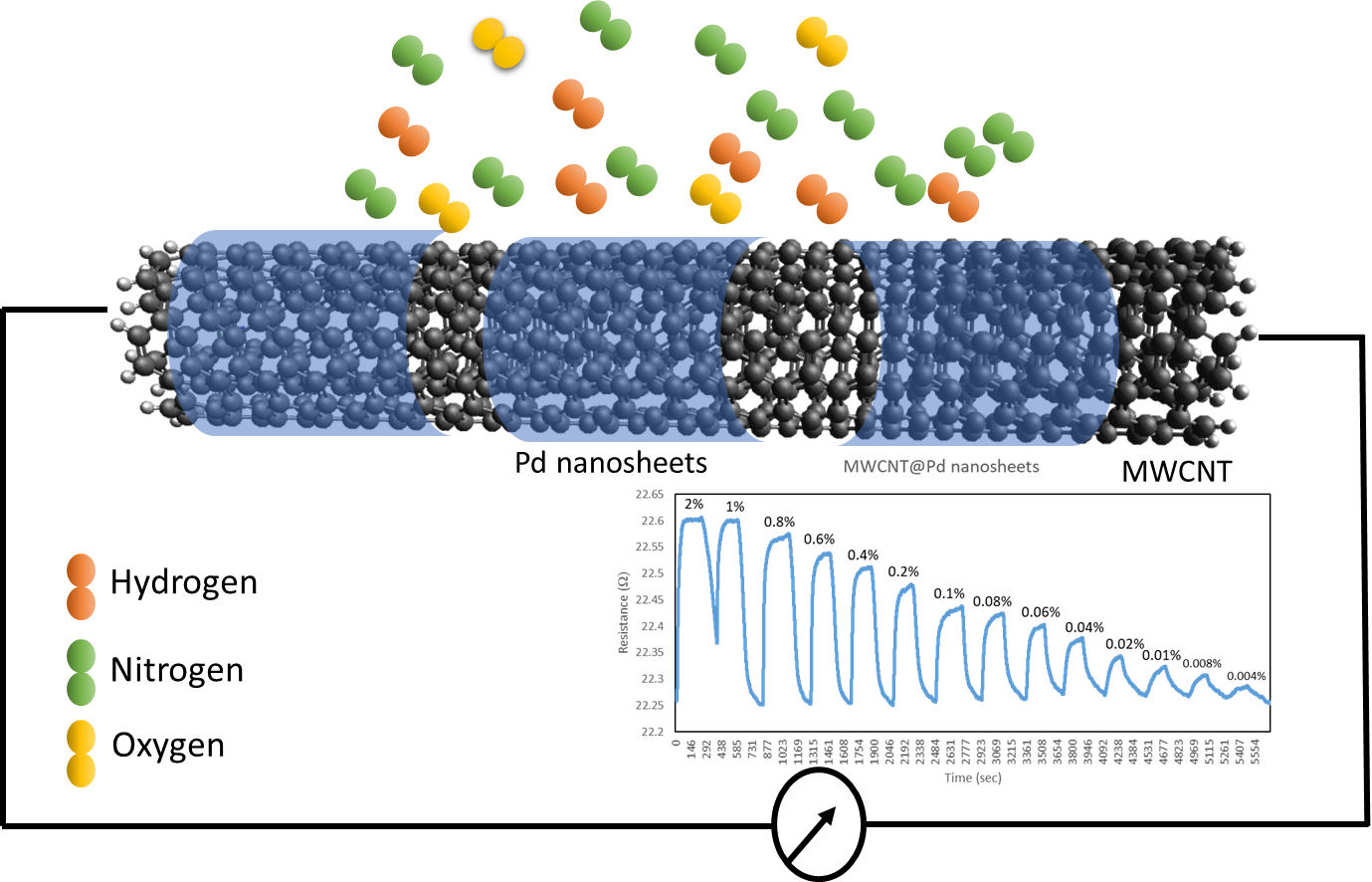2020 Virtual AIChE Annual Meeting
(395e) Nanocomposites of Multiwalled Carbon Nanotubes and Palladium-Based Nanosheets for Hydrogen Sensing
Authors
Kumar, A. - Presenter, SUNY, Buffalo
Mohammadi, M. M., University at Buffalo, The State University of New York
Thundat, T., University at Buffalo (SUNY)
Swihart, M., University at Buffalo
Liu, J., University at Buffalo (SUNY)
Thin palladium nanosheets have been gaining attention for various applications due to their high surface area, high surface atom fraction, and excellent electrical conductivity. Palladium has been explored as a resistive hydrogen sensor because of its unique property of forming hydrides in the presence of hydrogen at room temperature. However, most Pd-based sensors suffer from low response with a limit of detection around 300 ppm. This work describes the design and fabrication of multi-walled carbon nanotubes@Pd nanosheets (MWCNT@Pd NS) composites for hydrogen sensing applications. The Pd nanosheets were prepared by a CO confinement strategy using a one-pot solvothermal method. The prepared Pd nanosheets had a high surface area of ~125 m2/g with a thickness of only ~2 nm. The prepared Pd nanosheets were then dispersed in hexane along with CNT and sonicated to produce a homogeneous suspension. The nanocomposite solution was drop cast onto an interdigitated electrode, and its performance for hydrogen detection in synthetic air was evaluated. Compared with pristine Pd nanosheets, the MWCNT@Pd nanosheets showed enhanced hydrogen detection performance. The resistance change of MWCNT@Pd nanosheets to 2% H2 was 2%, compared to 0.5% change for pristine Pd nanosheets. The LOD of MWCNT@Pd nanosheets was also found to improve to <10 ppm, far below the 300 ppm LOD of Pd nanosheets. This encouraging result could prove useful in the fabrication of low-cost hydrogen sensors based on 2D Pd nanomaterials.


